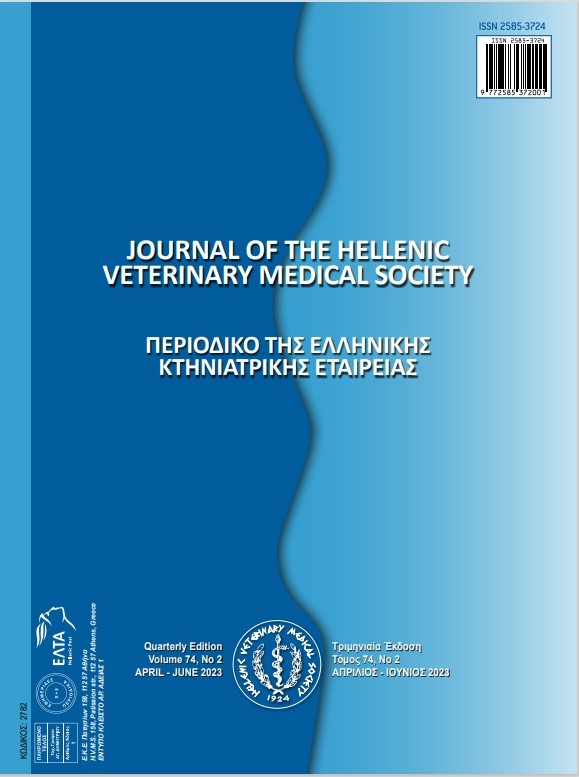Investigation of Serum allergen-specific IgE concentrations in feline asthma: a clinical experience

Аннотация
The aim of this study is to investigate allergen agents by allergen-specific serum IgE analysis in domestic cats diagnosed with feline asthma (FA). A total of 21 cats (16 FA and 5 control cats) were included in the study. Allergen-specific serum IgE levels were measured in cats diagnosed with feline asthma and in the control group. Allergen levels were classified as negative, weak, moderate and strong. The difference between the two groups was compared statistically. While the mean age of the cats in the FA group was 3.9kg ±2.4 years, the mean age of the cats in the control group was 3.4±2.2 years. The most common clinical manifestations in cats with FA were cough, sneezing, wheezing, and acute dyspnea, respectively. Allergen-specific IgE levels tested for 20 different allergens showed that 14 out of 16 cats developed a reaction to more than one allergen. The vast majority of cats with FA had a moderate or strong positive reaction to house dust mites. In conclusion, FA is an important and common chronic lower respiratory tract disease of feline patients and allergen-specific serum IgE levels can be easily used in clinical practice to guide the selection of allergens in the treatment of this disease and adjust for the quality of life and well-being of cats.
Article Details
- Как цитировать
-
Keskin Yılmaz, N., Kahraman, D., & Albasan, H. (2023). Investigation of Serum allergen-specific IgE concentrations in feline asthma: a clinical experience. Journal of the Hellenic Veterinary Medical Society, 74(2), 5815–5820. https://doi.org/10.12681/jhvms.30377 (Original work published 6 июль 2023 г.)
- Выпуск
- Том 74 № 2 (2023)
- Раздел
- Research Articles

Это произведение доступно по лицензии Creative Commons «Attribution-NonCommercial» («Атрибуция — Некоммерческое использование») 4.0 Всемирная.
Authors who publish with this journal agree to the following terms:
· Authors retain copyright and grant the journal right of first publication with the work simultaneously licensed under a Creative Commons Attribution Non-Commercial License that allows others to share the work with an acknowledgement of the work's authorship and initial publication in this journal.
· Authors are able to enter into separate, additional contractual arrangements for the non-exclusive distribution of the journal's published version of the work (e.g. post it to an institutional repository or publish it in a book), with an acknowledgement of its initial publication in this journal.
· Authors are permitted and encouraged to post their work online (preferably in institutional repositories or on their website) prior to and during the submission process, as it can lead to productive exchanges, as well as earlier and greater citation of published work.


